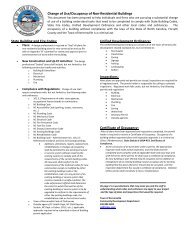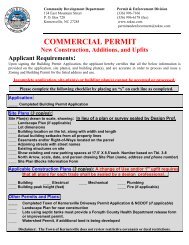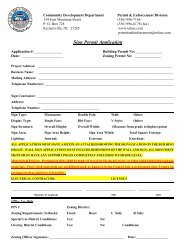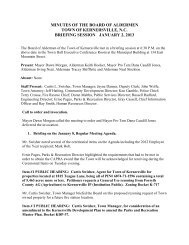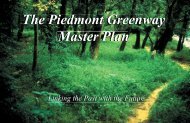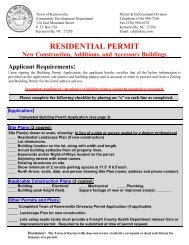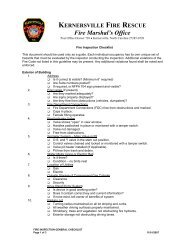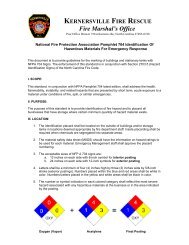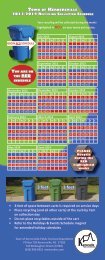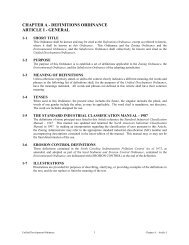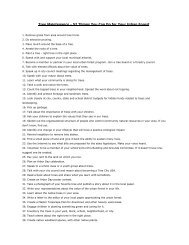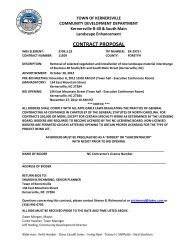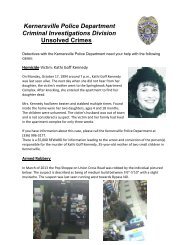Design & Construction Specifications - Town of Kernersville
Design & Construction Specifications - Town of Kernersville
Design & Construction Specifications - Town of Kernersville
Create successful ePaper yourself
Turn your PDF publications into a flip-book with our unique Google optimized e-Paper software.
A. Intersection Sight DistanceIn order for vehicles to safely maneuver into or through an intersection,sufficient sight distance must be provided so as to avoid collisions. Intersectionsight distance is measured from a driver's eye 3.5 feet high to an object 4.25feet high as measured from the pavement surface.The amount <strong>of</strong> sight distance required at an intersection depends on the type <strong>of</strong>traffic control at the intersection and the speeds <strong>of</strong> the vehicles.1. Stop Sign ControlAt approaches to intersections that are controlled by stop signs or atdriveways where the driver is required to stop before entering the street,the driver must have an unobstructed view <strong>of</strong> the entire intersection andadequate sight distance for any <strong>of</strong> the various vehicular movementsallowed upon departure <strong>of</strong> the intersection. These movements mayinclude crossing the street, turning left or turning right onto the street.An obstruction to the driver's view shall not be located within the sighttriangles as defined herein to permit adequate view <strong>of</strong> the intersection.In addition, there shall be no sight obstructions located in the triangularareas shown in Figures 1 through 4 to allow for safe departure throughthe intersection. The measurement <strong>of</strong> intersection sight distance isalong the centerline <strong>of</strong> the appropriate lane <strong>of</strong> the roadway and ismeasured from an eye height <strong>of</strong> 3.5 feet above the surface <strong>of</strong> theroadway to an object 4.25 feet above the surface <strong>of</strong> the roadway. Thelocation <strong>of</strong> the driver's eye (d1) is dependent on the classification <strong>of</strong> theintersecting streets. For all intersections where the through street is athoroughfare, the driver's eye location shall be 15 feet back from theface <strong>of</strong> curb extended through the intersection, or the edge <strong>of</strong> pavementif there is no curb. At all intersections where the through street is a localor collector street, and for driveways, the driver's eye shall be locatedten (10 feet behind the face <strong>of</strong> curb extended, or the edge <strong>of</strong> pavement ifthere is no curb. The sight distance lengths d2 and d3 shown in Figures1 through 3 for left or right turns onto the through street are dependenton the design speed <strong>of</strong> the roadway and are presented in Table 3-1.Figure 4 shows the measurement method for determining the sight linefor left turns from the through street. Table 3-2 gives the minimum sightdistance for this movement across one, two, or three lanes (d1).



